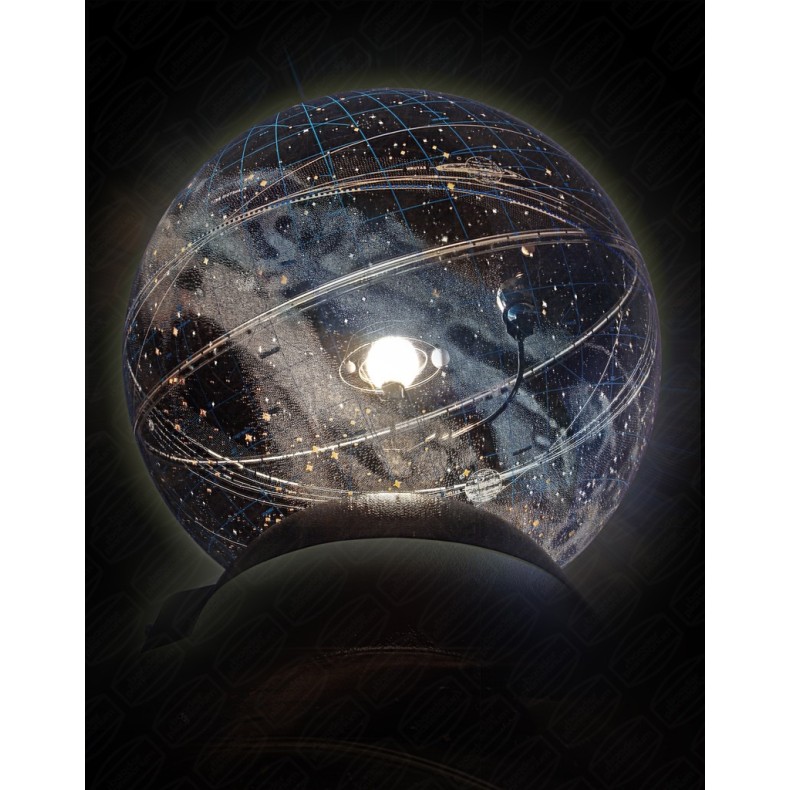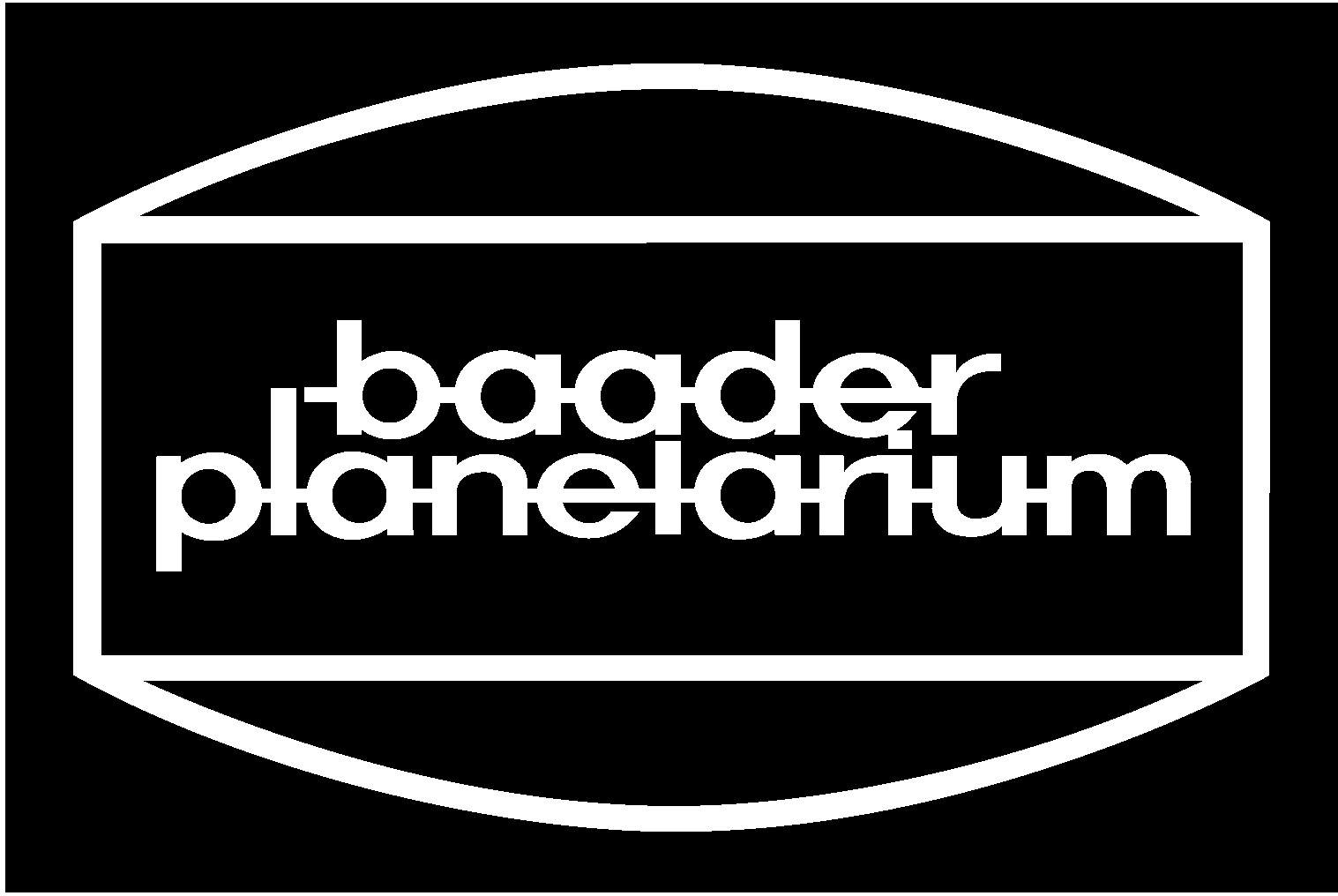Educational Planetarium BAADER PLANETARIUM NV 110/220
Educational Planetarium of great prestige. Useful to demonstrate astronomical phenomena of different kinds and suitable for primary, secondary and even university students. Its design allows studies from both a geocentric and heliocentric point of view.
| Carrier | Description | Estimated Delivery | ||
|---|---|---|---|---|
 |
Home delivery - International | Home delivery - International |
Friday, 9 January - Friday, 16 January |
|

Home delivery - International
Home delivery - International
Estimated delivery:
Friday, 9 January - Friday, 16 January
WARNINGThe particular characteristics of this extraordinary planetarium make it a product that only made to order and the delivery time is 6 to 8 monthsApproximately. Its manufacture is entirely handmade and each piece is made with the dedication and care that only BAADER PLANETARIUM is able to offer in its products.
40 YEARS OFBAADER PLANETARIUM NV 110/220
With the intention of demonstrating celestial mechanics interpreted both from the heliocentric and geocentric point of view, a large number of planetariums BAADER PLANETARIUM have demonstrated their scientific capabilities in front of students and amateur astronomers from all over the world. This planetarium presents an absolutely unique and patented method to demonstrate the relationships established between celestial bodies.
Description
The planetarium NV 110/220 from BAADER PLANETARIUM consists of three parts: the hemisphere with stars that can be black and transparent simultaneously, the Solar System including its motorization system, located inside the sphere and finally the base containing the transformer and all the associated control electronics.
The celestial globe of the BAADER PLANETARIUM NV 110/220 is manufactured in plexiglass (R) which has undergone a black color treatment to obtain a transparency of approximately 5%. This material produces an extraordinary optical effect: under direct light incidence, the globe sphere will appear practically opaque due to the absorption and reflection properties of Plexiglass (R). However, when observing the planetarium in a dark room, the human eye will adapt to the existing light conditions and the sphere will appear transparent: the Solar System inside the globe can be observed with total clarity.
Using three different colors, the stars and constellations are printed on the outside of the globe: stars up to magnitude 5 are represented and the constellations are indicated by connecting lines between stars. An equatorial graduation circle allows locating the position of the fixed stars, making it easy for the educator/discloser to explain the principles of astronomical navigation.
By using white paint on the inner side of the globe, the observer has the feeling of looking at the real sky with its white stars on a black background.
The Ecliptic has also been included as a line, indicating the months in the correct order so that the actual position of the Earth at any time of the year can be seen.
The entire globe or sphere can be rotated in all directions and aligned with the apparent position of the sky, clearly demonstrating why at different times of the year there are parts of the sky that we cannot observe.
The Solar System of the planetarium BAADER PLANETARIUM NV 110/220 uses a microscope bulb located in the center of the sphere as a light source. It can be covered with a removable plastic globe thus providing a body of diffused light that perfectly represents the Sun.
The planets Mercury, Venus and Mars are shown together with their orbits. They can be adjusted by hand, to demonstrate their positions during opposition and conjunction phenomena. The outer planets are shown with their orbits printed on the inner face of the globe. This allows the observer to compare the relative positions and inclinations of the various orbits with respect to the ecliptic plane of the Earth.
The system Earth-Moon is equipped with a miniature variable speed motor. In this way the following movements can be demonstrated:
1. The motion of the Earth around the Sun (Translation)
2. Earth rotating on its own axis (Rotation)
3. The Earth's axis pointing towards the celestial poles
4. The motion of the Moon around the Earth
5. The displacement of the lunar nodes.
This mode of representation and the precision achieved are a unique combination. It really facilitates the understanding of many of the relationships that are established in celestial mechanics: the mechanics and causes of day and night, the mechanics of the meteorological seasons, the understanding of the movement of the Moon, the phases and its eclipses.
Just as easily, the planetarium BAADER PLANETARIUM NV 110/220 allows to explain a great number of other phenomena: the tides, the Earth's time zones, Solar and sidereal time, the displacement of the lunar nodes, the relationship between the celestial equator and the plane of the ecliptic, the variation of the starry sky according to the time of year, the circumpolar stars and their relationship to geographical latitude, the position of the orbital plane of a satellite, the mechanics of the phases of Venus, the Platonic year, the change of the equinoxes, the relativity of the observer's position, the synodic, sidereal and draconic time of the Moon, the position of a satellite in space..
The base of the planetarium contains the transformer as well as two control knobs to drive the Earth movement model and the light intensity of the projection lamp.
A flexible cable is used to connect the transformer to the gear unit of the ground system. In this way, the globe including its internal gear system can be rotated around any axis at any time.
If the plastic cover is removed and used to place over the Sol and that emits diffuse light, the planetarium's projection capabilities BAADER PLANETARIUM NV 110/220 can be easily verified. The light source provides the projection of a starry sky on the ceiling of the room where we are located. The best projection is provided at about 4,5m distance.
Technical Specifications:
Balloon diameter: 50cm
Total height: 52cm
Weight: 3.8 Kg.
Electrical parts:
Projection lamp: Osram 8017/6V/15W
Transformer: 8V/18VA with rectifier to feed motor.
Motor: Miniature DC with a speed control ratio of 1:8
Educational Applications
Primary Education
1. Motion of the Earth around the Sun
2. Direction of the Earth's axis towards the celestial pole (Seasons)
3. Rotation of the Earth on its axis.
4. Change in day length (summer, winter)
5. Orbit of the Moon around the Earth (new Moon, phases of the Moon, Lunar eclipse, Solar eclipse)
6. Change in the apparent position of the stars according to the season
7. Movement of the stars throughout the night due to the Earth's rotation.
Secondary Education
1. The Earth is "hanging in space" and rotates around its axis.
2. The drift of the apparent motions of the Sun, Moon, Planets, and fixed stars, with respect to the real motion of the Earth, visible in the planetarium.
3. The change of the lunar nodes.
4. The horizon, depending on our position on Earth.
5. Celestial Equator and Ecliptic.
6. Interpretation of the celestial globe as a spherical planisphere, magnitudes of the stars and constellations
7. Synchronization of the Earth and the globe with the stars to explain the current night sky.
High School and University
1. Precession of the orbits and the different calendars (lunar year - solar year)
2. Solar time, sidereal time, solar day and sidereal days both directly visible.
3. Astronomical positioning and astronomical determination of latitude and longitude deduced from heliocentric observations.
4. Different coordinate systems.
5. Change of the reference plane (referring the observations to the horizontal ecliptic plane or to the horizontal equatorial plane).
6. Parallaxes in nature and parallaxes in the planetarium.
7. Horizon, movement of the Moon and the Sun.
8. Projection with the planetarium and adjustment of the star globe to match the actual sky from different positions on Earth and thus use it to learn celestial navigation.
































